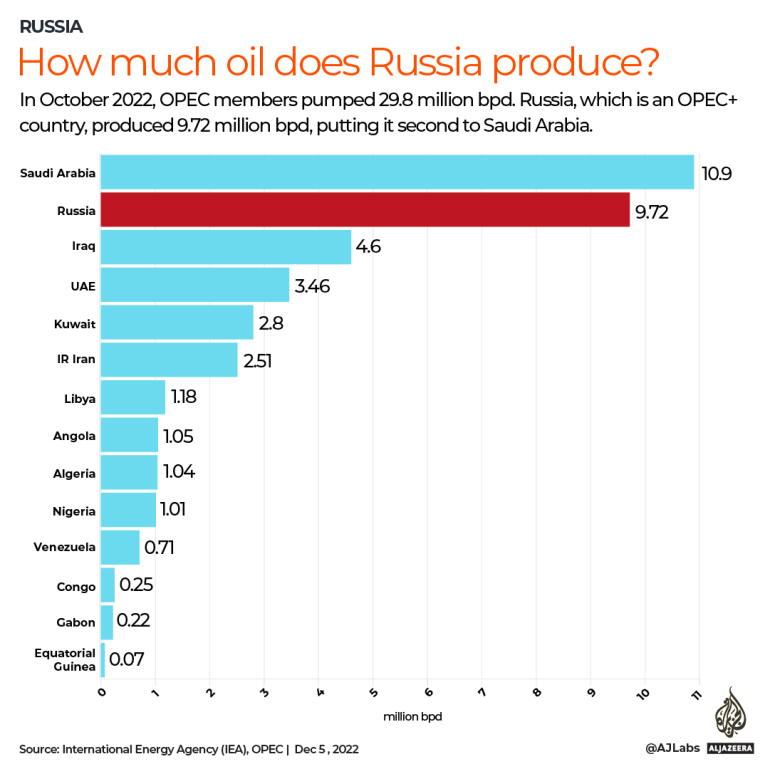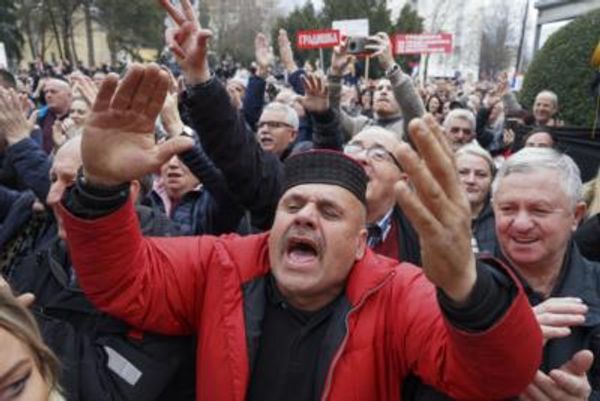
The Ukraine war has made the security and price stability of domestically produced renewable energy so attractive to governments that it will become the world’s top source of electricity in the next three years, according to The International Energy Agency.
The world will build 2,400 gigawatts (GW) of new generating capacity mainly from solar and wind energy in the next five years, equal to China’s entire current generating capacity, the IEA said in a new forecast released on Tuesday.
That is a level of investment 30 percent higher than was predicted a year ago.
That rate of increase will make renewables the world’s biggest source of electricity by 2025, toppling coal, said the IEA.
By 2027, they will account for 38 percent of the electricity mix, up from 28 percent today. 
The war has caused huge spikes in hydrocarbon prices as the West banned Russian hydrocarbons and scrambled to replace them.
The United States banned Russian crude oil imports on March 8, two weeks after Russia’s invasion.
The European Union banned Russian coal a month later, and Russian crude oil in June.
Brent crude, a benchmark oil, surged from just above $70 per barrel in January to $122 in July. Natural gas rose from less than $4 per million BTU in January to almost $10 in August.
Fossil fuel producers, including Russia, made windfall profits of $2tn during the war, according to the IEA.
“Higher fossil fuel prices worldwide have improved the competitiveness of solar photovoltaics and wind generation against other fuels,” said the IEA.
Four-fifths of the new renewable capacity will come from solar photovoltaics and wind turbines, which will more than double all currently installed capacity in the next five years, the IEA said in its report.
And because renewables will absorb 90 percent of new investment, all other sources of energy in electricity production are expected to decline, including coal, oil and natural gas.
“The Ukraine war has accelerated all energy developments, in renewables and LNG gas, because we have to replace Russian energy,” said Kostis Sifnaios, head of Gastrade, a multinational company building a new gas terminal offshore the Aegean port of Alexandroupolis.
“I think European policymakers have understood that this dependence on Russian gas was not a good idea and its replacement is non-reversible,” he told Al Jazeera.

The key progress towards renewables comes from three key legislative initiatives.
The first is China’s 14th Five Year Plan, which called for a reduction in carbon intensity per unit of gross domestic product.
Last May, the EU passed the RePowerEU plan, which bound members to generate 45 percent of their total final energy consumption from renewables by 2030. To achieve this, they must generate at least two-thirds of their electricity from renewables.
The third is the US Inflation Reduction Act, which ploughs $370bn into renewable energy over 10 years – the US’s biggest public investment in clean energy.
But is the world on track?
The IEA’s forecast strengthens the view that the Ukraine war is speeding Europe’s green energy transition instead of stifling it, despite the conflict forcing Germany and Eastern Europe to fall back on higher domestic coal use in the short term.
A recent report from energy think tanks E3G and Ember showed that electricity generation from renewables in the EU had increased by a record 13 percent between January and September, as countries accelerated projects that were already in the pipeline and raised their 2030 emissions reduction targets.
Consumers, industry and governments appear to be doing ever more to counter climate change, despite a failure at this year’s UN climate summit in Egypt to advance mandatory cuts in greenhouse gas emissions.
Even if the IEA’s renewables forecast is fulfilled, it still doesn’t mean the world is doing enough to keep global warming at 1.5˚C.

The IEA’s World Energy Outlook, published in October, said that even under stated policies and announced pledges scenarios, the world is on track for 12 billion tonnes of carbon emissions a year by 2050, rather than the goal of net zero, followed by a temperature rise of 1.7 degrees Celsius by 2100.
However, Tuesday’s report includes a scenario whereby “global renewable capacity can expand by an additional 25 percent compared with the main forecast, if countries address policy, regulatory, permitting and financing challenges.”
Permitting problems
But renewables experts warn that the IEA’s predictions are based on assumptions that Europe has yet to meet.
“The IEA forecast assumes all regulatory progress put forward by the European Commission materialises,” said Ivan Pineda, director of innovation at Wind Europe, a wind energy industry advocacy and research group in Brussels. “That principally means permitting by EU governments. There are negotiations taking place between the European Council and European Parliament regarding permitting. If there is agreement, yes it’s possible,”
The upside of this is that a lot of mature projects with investment backing could be unlocked relatively quickly.
“Some 80GW of wind projects are stuck somewhere in permitting across Europe right now, compared with 200GW in operation,” said Wind Europe’s Christoph Zipf. “We need to make it much faster and simpler. For example, developers are obliged to hand in materials on paper, not digitally. We had a case in Italy where a developer told us that the paper and printing costs alone amounted to 20,000 euros.”
Wind Europe says it’s optimistic that the current negotiations will approve a two-year fixed deadline for permitting new projects by the second quarter of 2023.
Europe eventually plans to have 760GW of onshore and 450GW of offshore installed wind generating capacity.
The IEA report also highlighted possible bottlenecks in raw materials supplies.
“[Europe] imports a number of materials for wind turbines, especially rare earth materials – minerals that are included in magnets used inside the generators,” said Pineda. “If those materials are supplied, Europe has the production capacity to meet those targets,” he said, referring to the IEA forecast.
What happened before the war?
The Ukraine war is the latest – and possibly strongest – in a series of catalysts towards climate action.
For five years after the landmark Paris Accord of 2015, which set emissions reduction goals to keep global warming at or below 1.5˚C, global investment in renewables was flat at $1tr a year says the IEA. But because the cost of renewables kept falling, total installed capacity for that money rose each year to outpace increasing energy demand.
Three years after the Paris Accord, the EU set a goal to generate 32 percent of total final energy consumption from renewables by 2030. This led to binding National Energy and Climate Plans being published in 2019.
In 2020, during the pandemic recession, Europe launched the Recovery and Resilience Fund, assigning 37 percent of it to renewable energy to help realise 2030 goals.
In 2021, amid reports of speeding climate change, the EU launched Fit for 55, a goal to reduce emissions by 55 percent relative to 1990 levels by 2030. This would be done by accelerating the energy transition and generating 40 percent of total final energy consumption from renewables by 2030.
All this helped lead to a global increase in renewable energy investments that was already observed in 2020-21, after years of flat investment.







